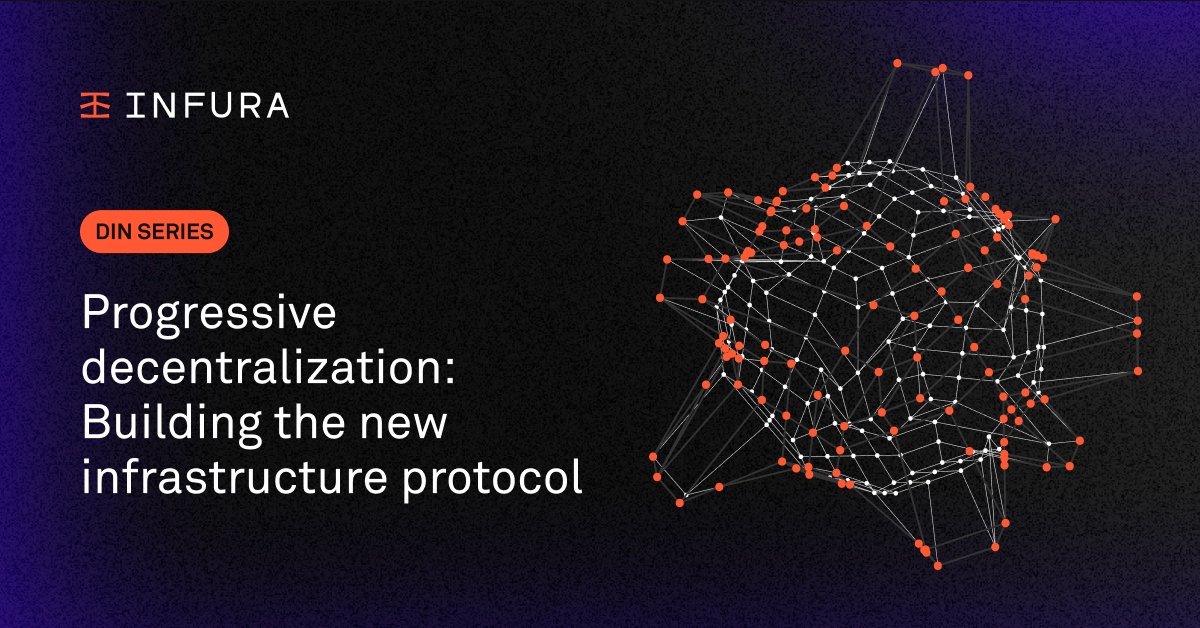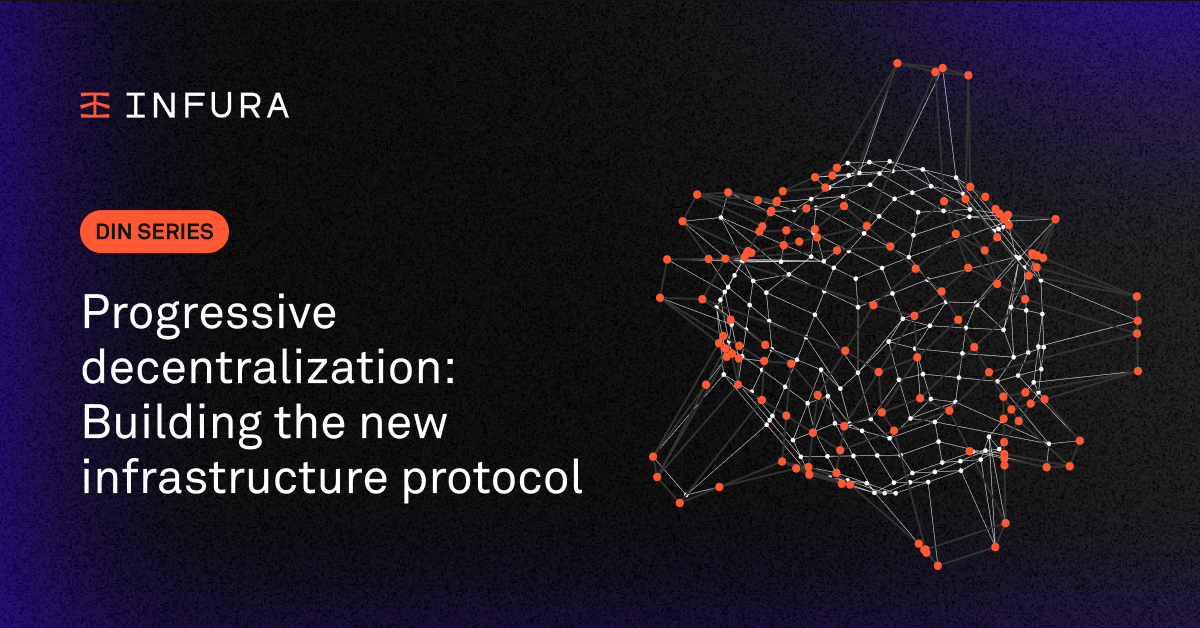Progressive decentralization part 1: Building the new infrastructure network
An update on key research findings and next steps as the decentralized infrastructure network team, made up of 26 partners, advances on the protocol.


An update on key research findings and next steps as the decentralized infrastructure network team, made up of 26 partners, advances on the protocol.
Since announcing plans to build a decentralized infrastructure network, the team, composed of node and cloud providers like Everstake and Microsoft, and 24 others, have been analyzing the remote procedure call (RPC) as a rapidly commoditizing layer within the web3 stack that creates value to all who use it.
Over the past months, we have observed that users of the RPC as a service layer have different needs and expectations and as such, have identified three core requirements the decentralized infrastructure network must achieve:
- Return responses that are expected with no out of bounds responses that could disrupt dapp performance.
- Operate within acceptable latency ranges.
- Pricing that is economically viable and accessible.
In short, the team must build a decentralized protocol and service that fulfills these requirements, while ensuring economic viability. This means that since the RPC layer will be commoditized, then the margins for network participants have to be optimized to fit market conditions.
We believe we can achieve this through the principles of progressive decentralization and a federated approach to building decentralized systems.
Building with the principles of progressive decentralization
We defined progressive decentralization and how its principles are being used to form the network in this article published late last year. Decentralizing the RPC layer can be effectively done progressively due to the many layers involved, which include, but are not limited to:
- Node Client Software: Not every blockchain has multiple software options, but in the case of Ethereum there are: Besu, Teku, Geth, Prysm, and beyond.
- The Software Supply Chain: Various libraries and frameworks can be used in order to build a node or infrastructure provider service: gRPC vs REST vs JSON-RPC.
- Hosted Server Model: There several iterations of this model like the cloud, purchasing servers and installing them in data centers, building a data center to run blockchain nodes, and any combination of the above, allows for hybridized infrastructure and failover capabilities.
- Location and Power of Servers: This is where RPC calls are processed geographically and what electrical power sources are available to run operations, both to power servers and prevent them from overheating.
It is not clear how decentralization of these layers will emerge and it’s likely each will exist on a spectrum. We will continue to work as a team to enable greater diversity and decentralization of these layers, while maintaining their respective business models using a federated architecture approach.
Key insights and next steps
The task at hand now is to prove that via progressively decentralizing each layer with a federated approach, we can make the economics work. Users would pay for the services offered through the decentralized protocol, as they will receive greater resiliency (through no centralized points of failure) for their dapp’s infrastructure and increased uptime to 99.999% for prices that are market competitive.
“[DIN] is important to the advancement of our industry. When you fully decentralize the RPC layer, it's more secure, more stable, and has more resilient performance, so customers benefit from a decentralized solution.” - Anna Petrenko, Everstake Head of R&D and partner on the decentralized infrastructure team
Proving that the federated approach can work for all network participants and operators will allow for the Infura R&D team and all partners to continue the task of progressively decentralizing the RPC layer of the web3 stack. To learn more about the web3 stack, check out this guide. To watch Infura’s initial announcement about the decentralized network, here is our Co-Founder’s keynote from DevCon 2022.
As we continue to advance work on the protocol, we will be sharing a monthly update on work completed. Interested in participating in this work? Contact us via email at din@consensys.net and please indicate whether you are an RPC or infrastructure provider, as well as the blockchains you support.

